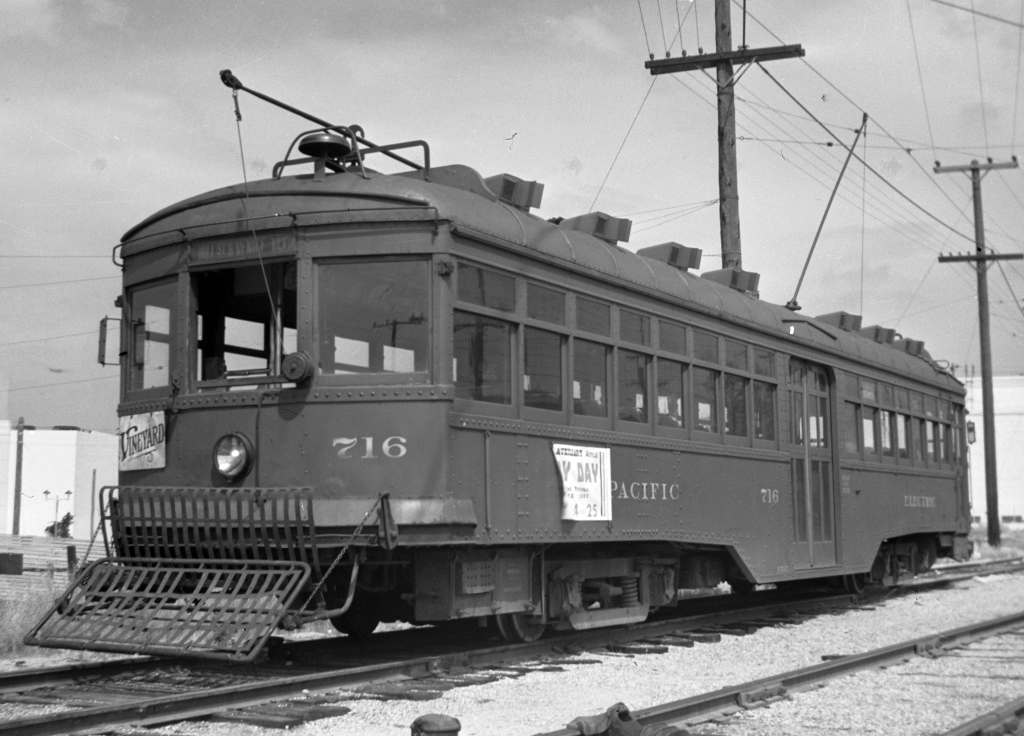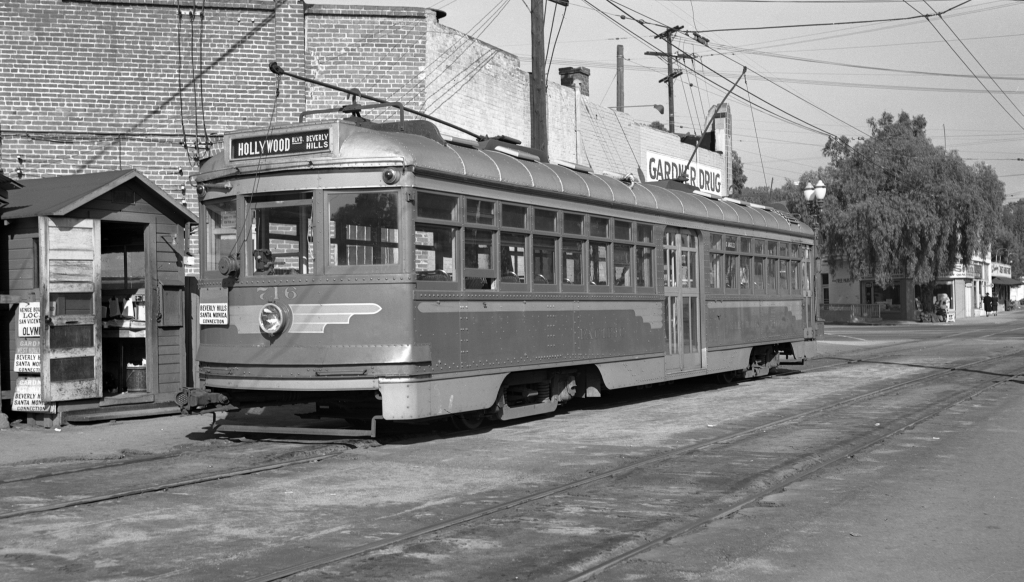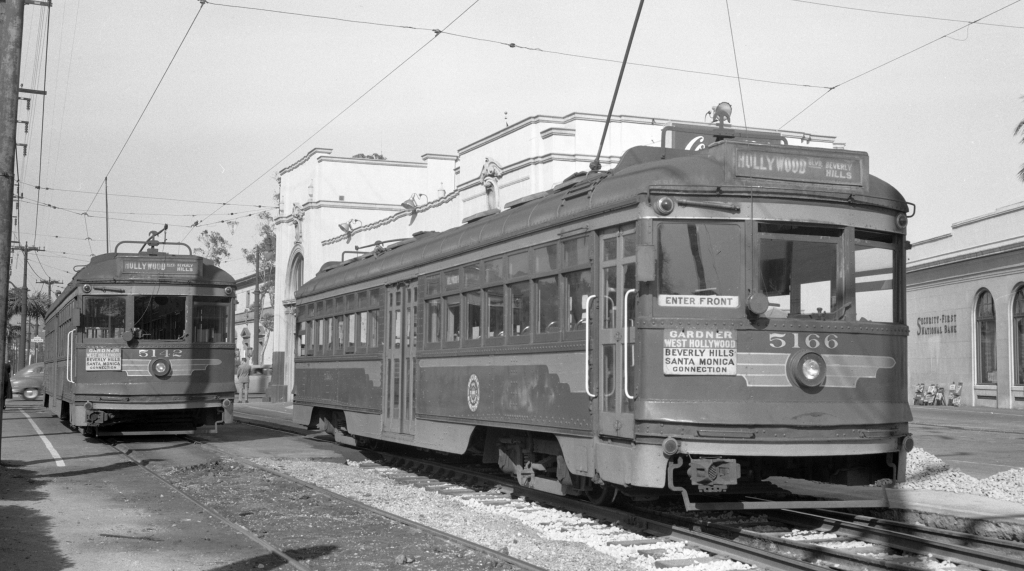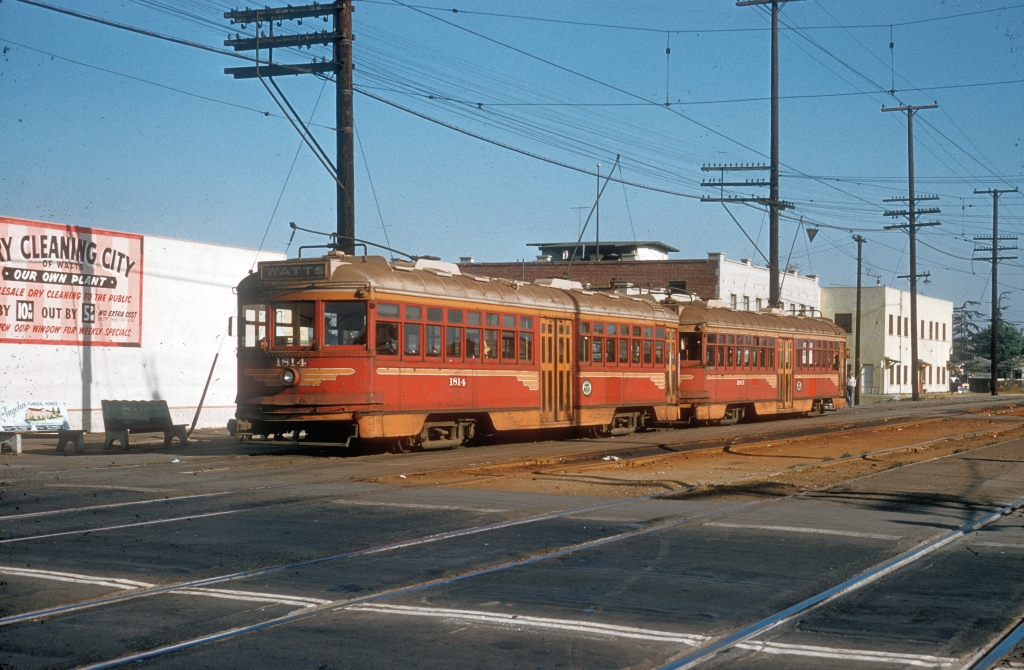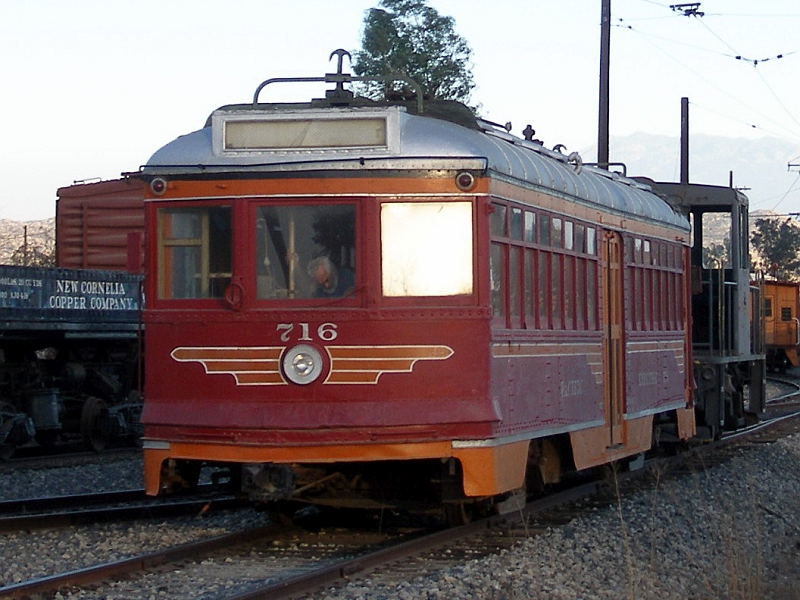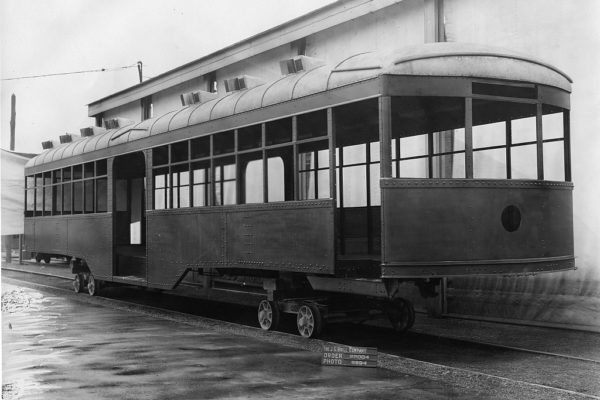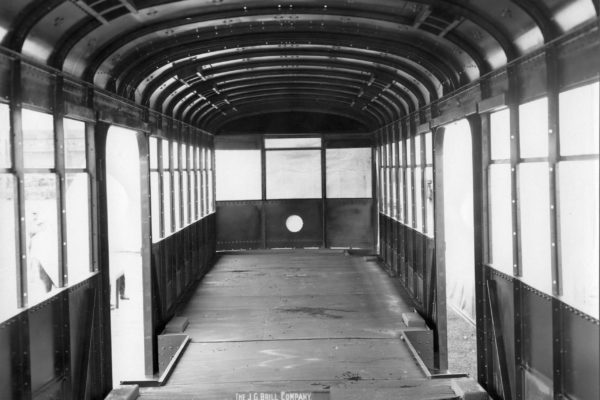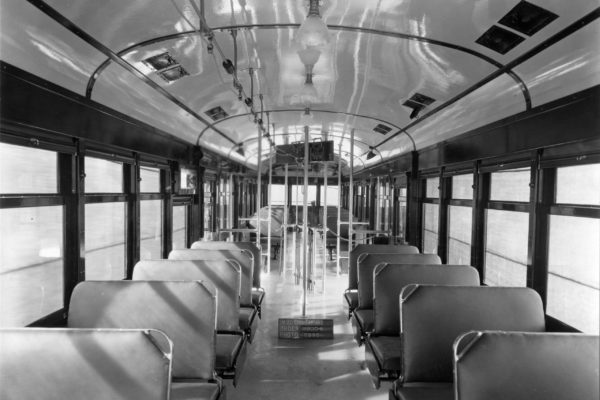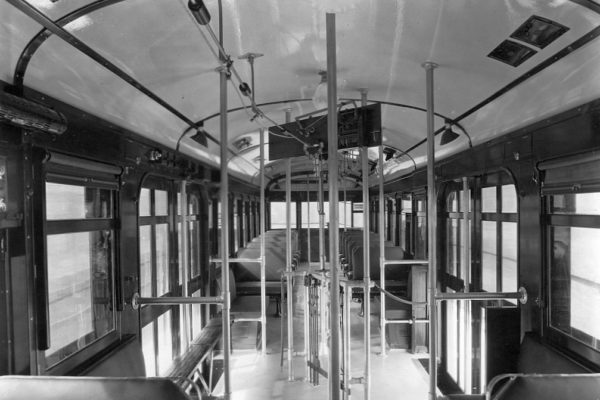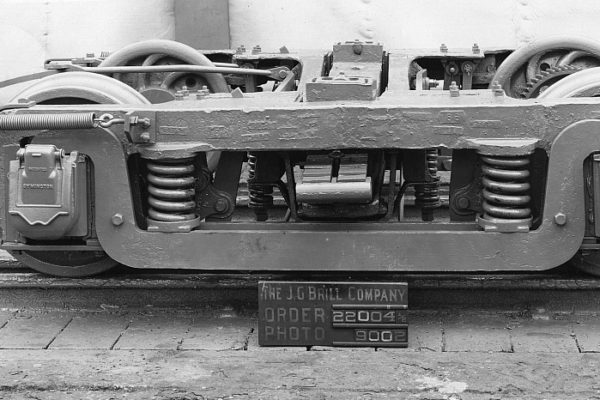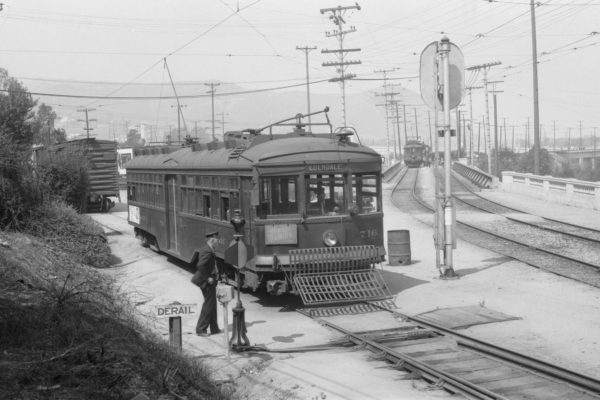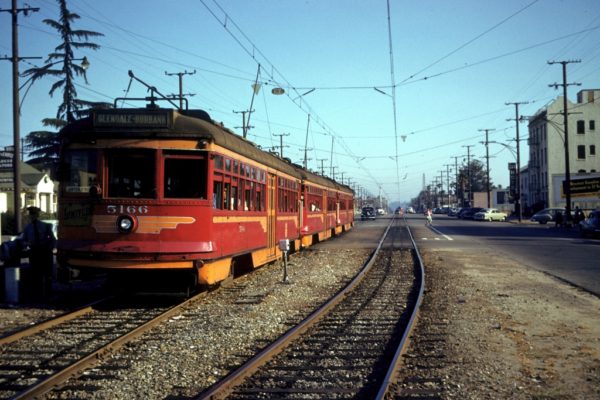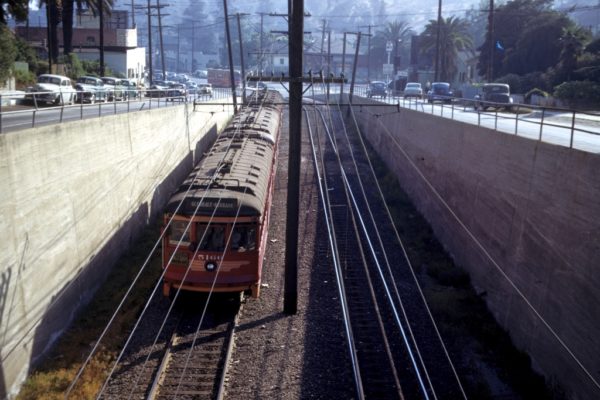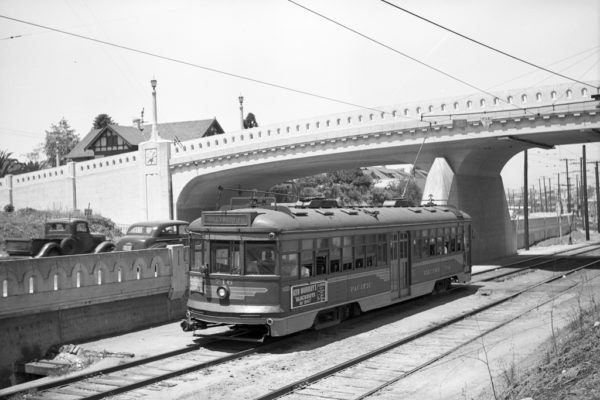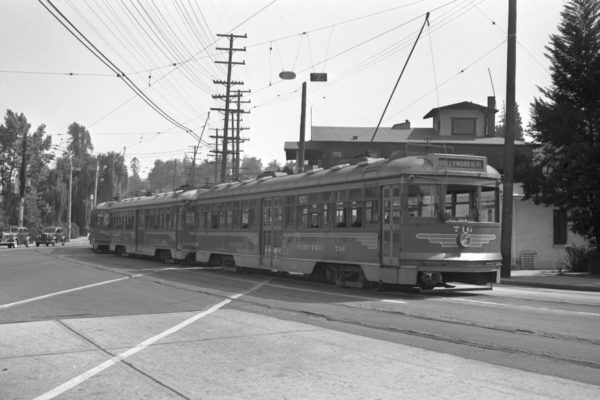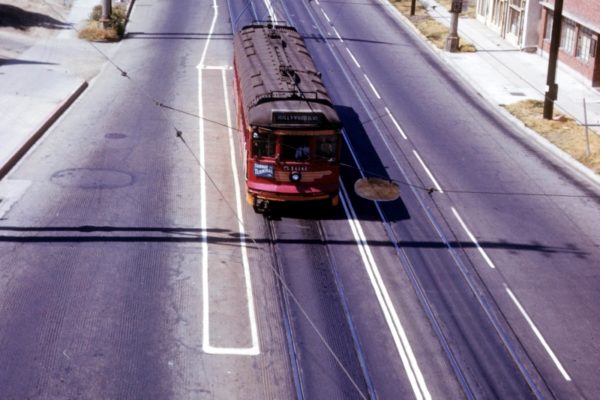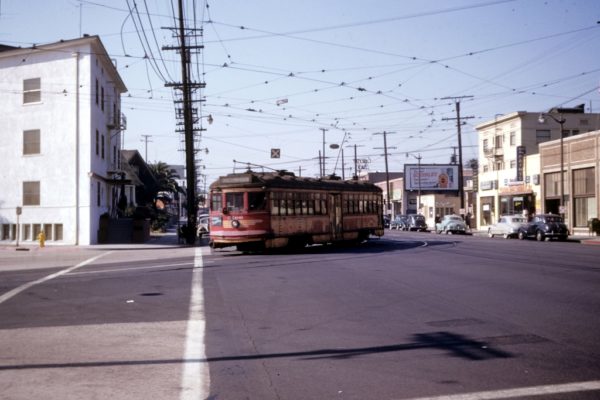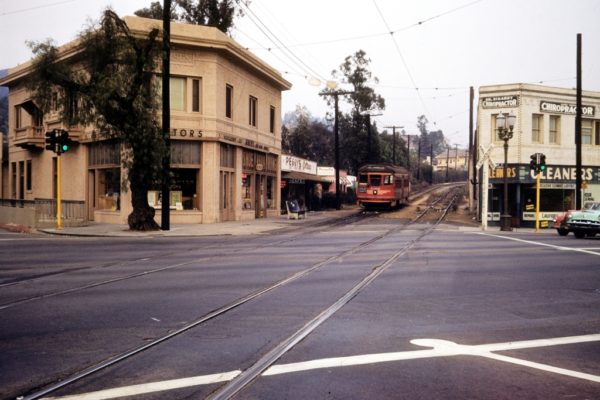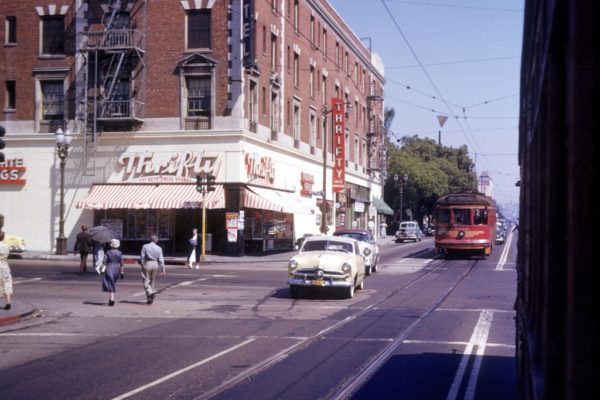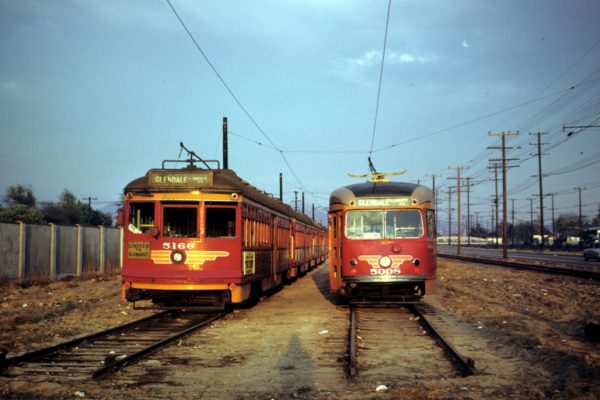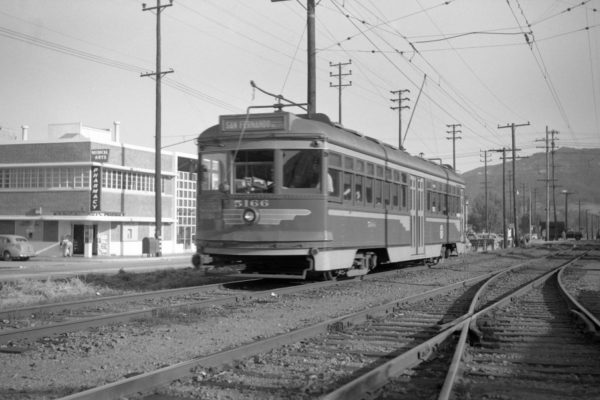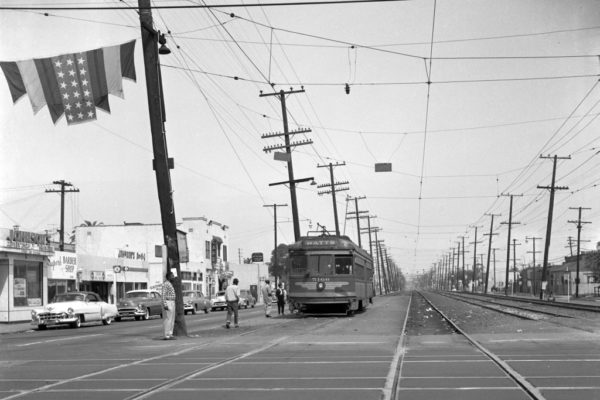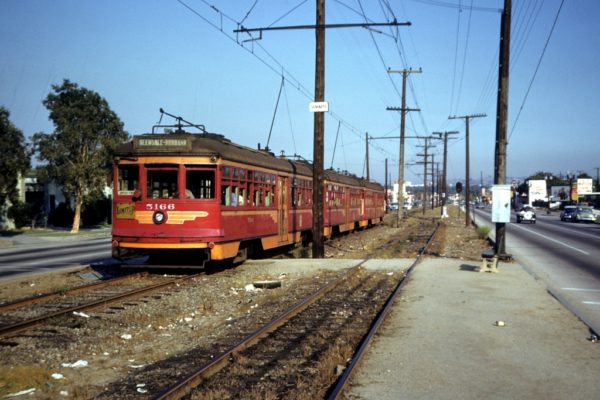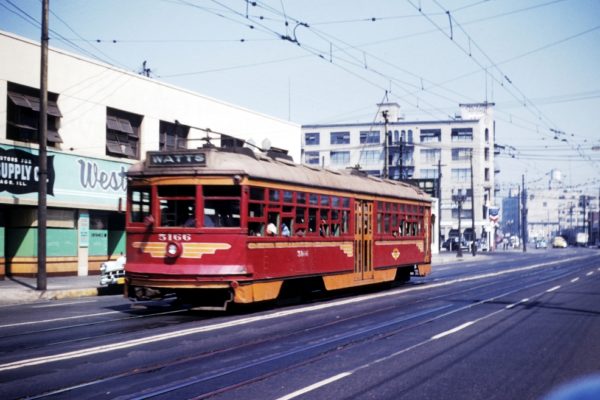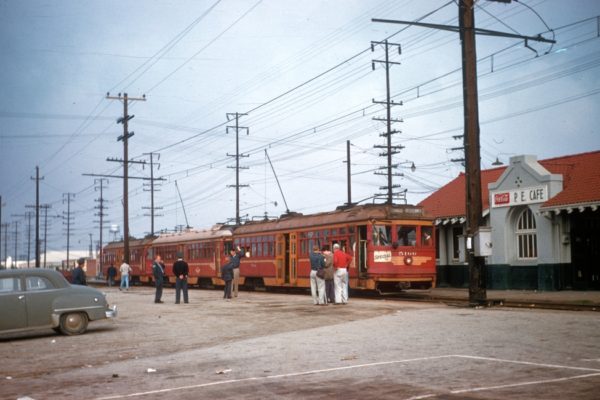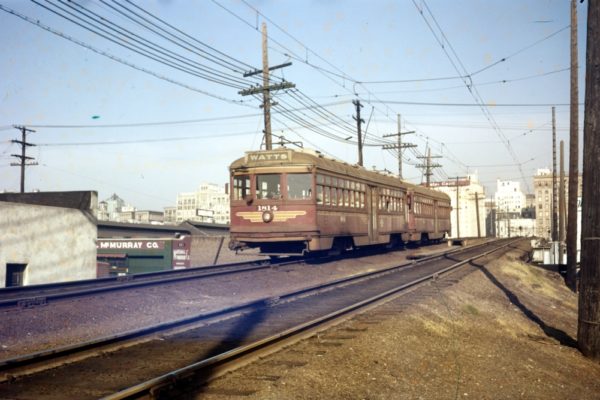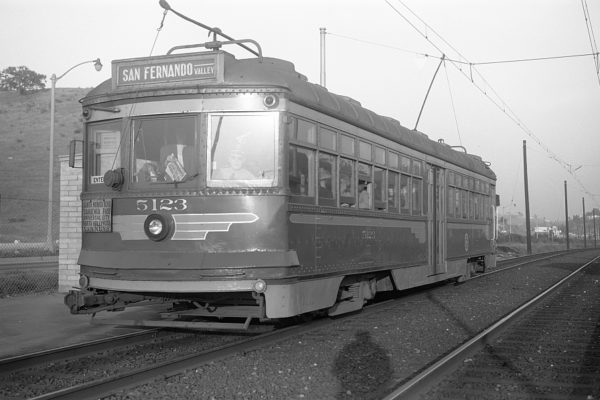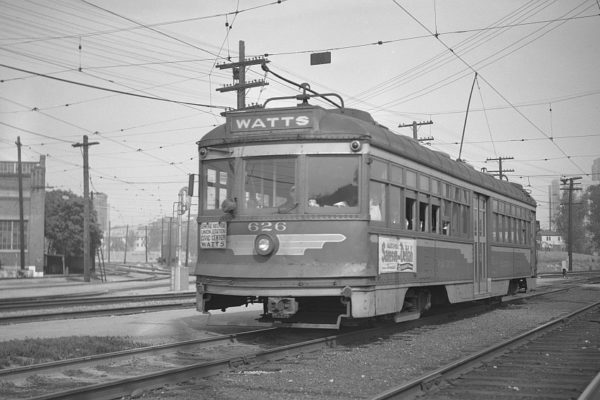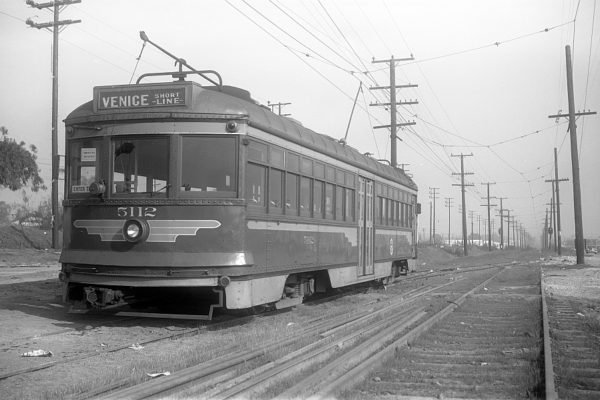History of the 600 Class “Hollywood” Cars
Pacific Electric’s famed 600 class “Hollywood” cars (600-759) are the most common and popular cars on the PE system. “Numerically, the 600 class was PE’s largest. When built, these cars were widely regarded by electric railway men as being the nation’s finest city cars; when rebuilt and speeded up, they were among the finest suburban cars. They enjoyed the longest life span of any PE car type. Their numerous appearances in motion pictures…familiarized them to international audiences.” Ira Swett, Interurbans Special 28
“In 1921, three important PE officials: Messrs. Annable, Small and White, toured electric railways of the eastern and Midwestern states to observe and inspect the most advanced city car types of that day. Purpose of their trip was to compile ideas for a projected new PE city car, to embody all the latest approved electric railway appurtenances; upon evolving a design for this “super” car, PE would then place an order for a large number of these units.
Finally concluding their lengthy tour, the PE officials closeted themselves in a New York City hotel room with Mr. Kippenberger, President of the St. Louis Car Company. In due time their ideas were jelled and a draughtsmen was sent for, who then and there roughed out the preliminary drawings for the new car. After final approval, PE signed with Kippenberger for fifty of these big, all-steel cars. Subsequently, St. Louis Car Company built sixty more, and The J.G. Brill Company of Philadelphia was the builder of fifty more.” Ira L Swett, Interurbans Special 28
The first fifty cars, 600-649, were built in 1922 by the St Louis Car Company. Arriving in the summer of 1922, the 600 class cars were first used on the Hollywood Blvd- West 16th St Line. “With large and heavy bodies and comparatively small wheels and underpowered, the new Hollywoods were slow—their top speed was about 28 mph—although they did provide good acceleration. With rattan seats, concrete floors, train operation and automatic couplers, the Hollywoods were a distinct step forward for the PE.” “The completely enclosed body marked a break away from the California car for Los Angeles, as well as bringing a new concept of comfort and quietness to city service. Ira L Swett, Interurbans Special 28
Pacific Electric placed an order for fifty more cars (650-699) from St. Louis Car Company in 1924. These cars were mechanically and structurally identical to cars 600-649. Minor differences occurred with the top of center doors having rounded styling, improved roof ventilation, and seats covered in pantasote instead of rattan. In 1925, Pacific Electric ordered an additional fifty cars (700-749) from the J.G. Brill Company. 700-749 were clones of cars 650-699 from St. Louis Car Company. A final order for ten cars, numbers 750-759, was placed in 1928 with St Louis Car Company. These cars were again mostly identical to the other St Louis cars with the exception of roller bearings, brass window sash, and deluxe leather seats.
All 160 of the 600 class cars were modernized and remodeled; beginning in 1939 in what would become the largest modernization program on the PE. Noted for their low speed, redesign of the motors increased top speed to 45 mph, allowing the cars to work efficiently on suburban service. The appearance of the cars was improved dramatically with the removal of eclipse fenders, built-in electric marker lights, and a new paint scheme of a brighter red, with orange striping and silver roof. The car interior was also aesthetically improved with new modern bulls-eye lights installed over every seat, along with new tubular bench style seats covered in mohair.
Starting in 1949, modernization began to convert the 600 class cars to one-man operation, where the motorman also handled the conductors job of passenger boarding and fare collecting. Upon completion in 1950, the cars were renumbered into the 5050 class. Cars 732-759 remained as two-man cars.
Retirement of the Hollywood cars began in late 1951 as a result of abandonment of several lines on the Western District and the full abandonment of the Northern District to Pasadena and Glendora. Cars 731-759 were sold to the General Urquiza Railway in Buenos Aires in 1952. An additional eight cars were sold to Portland Traction Company in Portland, Oregon in 1953. Scrapping of the 5050 cars began with five cars being scrapped at the Southern Pacific Railroad Alhambra Shops in Los Angeles.
In October 1, 1953, Pacific Electric passenger service was transferred to Metropolitan Coach Lines. The remaining 600 class cars worked the lines of the former western district and the Watts local line. In 1956, the Western District was abandoned, including the lines to Hollywood and Glendale-Burbank. Sixteen cars were retained for the Watts local Line. All remaining 5050 class cars were or sold to National Metals for scrapping at their Terminal Island, CA facility.
Metropolitan Coach Lines was absorbed in March of 1958 by the Los Angeles Metropolitan Transit Authority. Renumbered to the 1800 class on LAMTA, the sixteen cars ran a short period of service on the Watts Local Line until service was discontinued later in 1958. Scrapping of the last sixteen cars began in 1958 as cars were sold one by one to National Metals with the last cars were sold in early 1960. Orange Empire Trolley Museum member Walter Abbenseth bought the last two Brill cars, 1814 (716) and 1815 (717) as well as St Louis Cars 1801 (637), 1803 (635), 1812 (626) in February, 1960. The cars were trucked to the museum in Perris, CA during March of 1960 on permanent loan to the museum. Car 1812 was run on March 19-20 for the Electric Railroaders Association of Southern California on what would be the last operations of a Hollywood car on the former Pacific Electric.
Today Pacific Electric 716 is in storage at the Southern California Railway Museum awaiting restoration. As the car is complete, it is a good candidate for a future restoration. Generous donations to the museums Red Car Fund will make this dream a reality.

